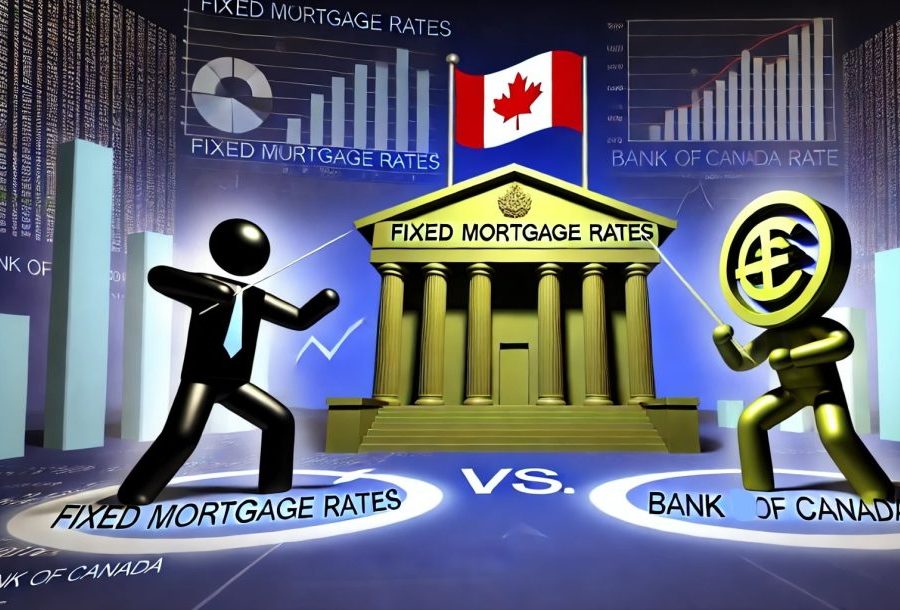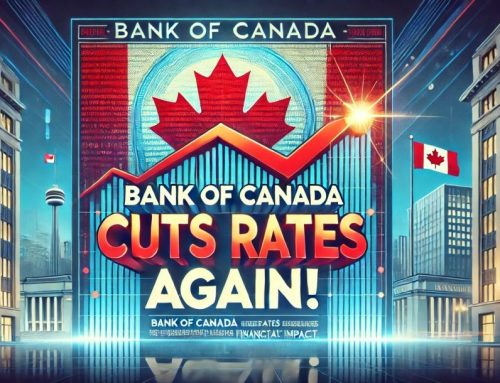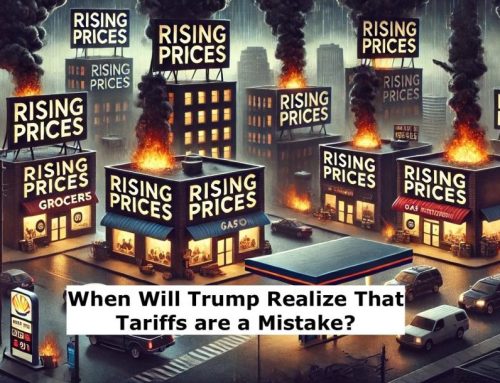Many clients tell us they’re waiting for the next Bank of Canada rate announcement before locking in a fixed mortgage rate. However, it’s important to understand that fixed rates don’t move in tandem with the Bank of Canada’s rate. In fact, they can sometimes move in the opposite direction.
For example, while the Bank of Canada announced a 0.50% rate cut on October 23 and is expected to cut rates again on December 11, fixed mortgage rates have been trending upward.
So, what’s driving this disconnect, and what can we expect in the weeks ahead?
How Much Will the Bank of Canada Cut Their Rate on December 11th?
It’s almost certain that we’ll see a cut on the 11th, but the size of the cut is still up for debate. It has been widely expected that the Bank of Canada will come through with another oversized rate cut of 0.50%. However, the current forecasts from the big six banks are divided—half expect 0.50%, while the other half predict 0.25%.
I would expect them to cut 0.25% and if they come through with 0.50% then I would look at this as a bonus.
We’ll find out on December 11th.
Will a Bank of Canada Rate Cut Lower Fixed Mortgage Rates?
Over the past year, fixed mortgage rates have fallen roughly 2.00% from their peak. Meanwhile, the Bank of Canada has only cut rates by 1.25% during the same period. While another rate cut would bring their rates closer, fixed mortgage rates don’t automatically follow suit.
Here’s why: fixed rates are primarily influenced by Government of Canada bond yields, not the Bank of Canada rate. Recently, bond yields have been climbing, pushing fixed rates up by 0.10% to 0.20% in past few weeks. This is why I always advise locking in your rate, rather than waiting for the next Bank of Canada announcement.
If rates drop after you lock in, we’ll get your rate dropped for you—even if you’ve already signed a mortgage commitment. But if rates rise, you’ll be protected. Waiting could result in having to accept a higher mortgage rate.
While fixed mortgage rates may eventually decrease, it’s still possible they could rise further, regardless of the Bank of Canada’s next move.
A Glimmer of Hope for Fixed Rates
There’s some good news: bond yields have started to decline since late last week. If this trend continues, we may see fixed mortgage rates edge downward. However, for now, fixed rates remain higher than they were a few weeks ago.
Ultimately, the bond market—not the Bank of Canada—will dictate the direction of fixed rates. Since markets are already pricing in the expected rate cut, a December 11 announcement may not trigger any significant movement. Time will tell.
The Trump Factor: How Tariffs Could Impact Mortgage Rates
U.S. President-elect Donald Trump’s threat to impose a 25% tariff on Canadian imports has grabbed the Bank of Canada’s attention. Given that 75-80% of Canadian exports go to the U.S., such a move could severely damage Canada’s economy and potentially force the Bank to adopt more aggressive rate cuts.
While this might sound positive for mortgage borrowers, the relief could be short-lived. A significant economic shock could eventually lead to rising rates once again.
The bottom line?
Trump’s comments—and actions—have the power to sway bond markets and mortgage rates dramatically. This unpredictability underscores why some borrowers prefer the stability of fixed rates over the risk of a variable-rate mortgage.
Final Thoughts
While economists can make educated guesses, the future of mortgage rates is inherently uncertain. Major global events—like the pandemic and geopolitical conflicts—can quickly upend forecasts.
Waiting for a perfect moment to lock in a rate can be risky. If you’re considering your options, my advice is simple: act now to secure your rate. If rates drop later, we’ll adjust. But if they rise, you’ll be glad you locked in early.
When it comes to mortgage rates, staying informed and proactive is the best way to beat uncertainty.








Leave A Comment